French Press vs Pour Over: Which Brews Better?
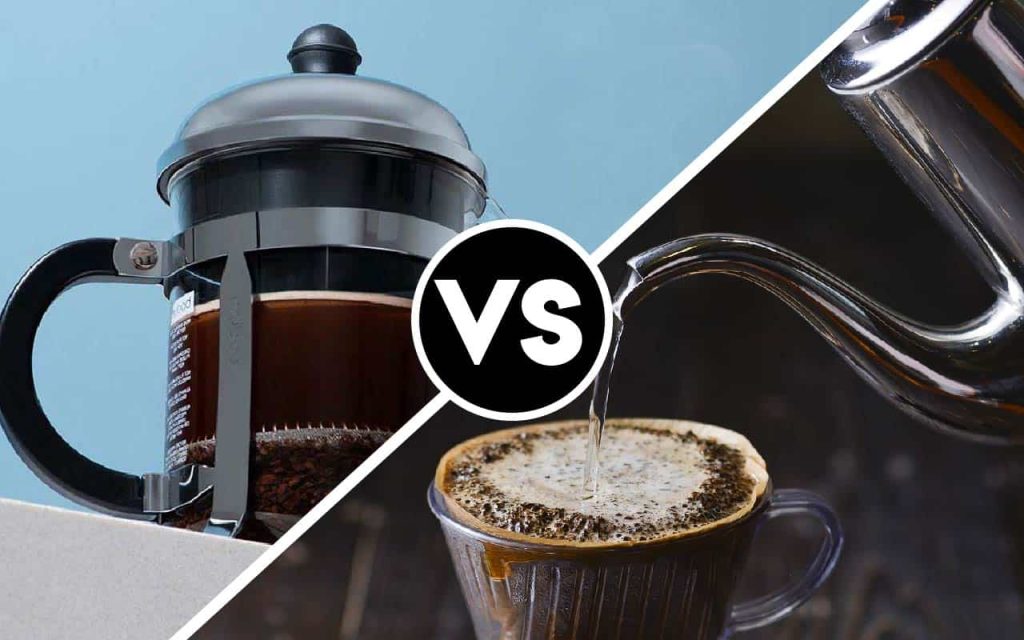
In recent years, there has been a lot of development in the field of coffee brewing. For people that are trying out coffee for the first time, it could be very interesting to try out all the different brewing methods, devices, as well as coffee blends. In today’s guide, I will tell you more about the French press vs pour over.
Both the French press and the pour over are extremely simple brewing methods. You do not need anything aside from the device, some coffee beans, and a bit of water to prepare your coffee. There are some limitations in terms of which beans you can use, but I will talk more about that a bit later.
So if you are interested in learning more about the differences and similarities, the features, as well as the pros and cons of French presses and pour overs, I suggest you keep on reading!
Main Differences Between French Press vs Pour Over
The main differences between French press vs pour over are:
- French presses brew coffee through full immersion, whereas pour overs do it through infusion.
- French presses use coarsely ground coffee beans, whereas pour overs use medium-fine to medium-coarse grounds.
- French presses can be a bit more difficult to clean, whereas pour overs can be made spotless in only a few minutes.
I cannot say that one of these two coffee brewing devices is better than the other – essentially, they are both great for different reasons. French presses are very easy to use and they have the shortest brewing time ever. On the other hand, pour overs might take a bit longer to brew coffee, but they are generally a bit more affordable and easier to clean.
The choice comes down to your preferences and needs! Make sure that you research these devices well before making your final choice. If you want to learn more about them and their features, stay tuned for the rest of the article!
The Basic Facts
If you are an avid coffee drinker, chances are that you have already tried coffee prepared with a French press or a pour over. These devices are quite popular nowadays but have also been around for years. They are a great option for people looking to prepare a cup of coffee in practically no time.
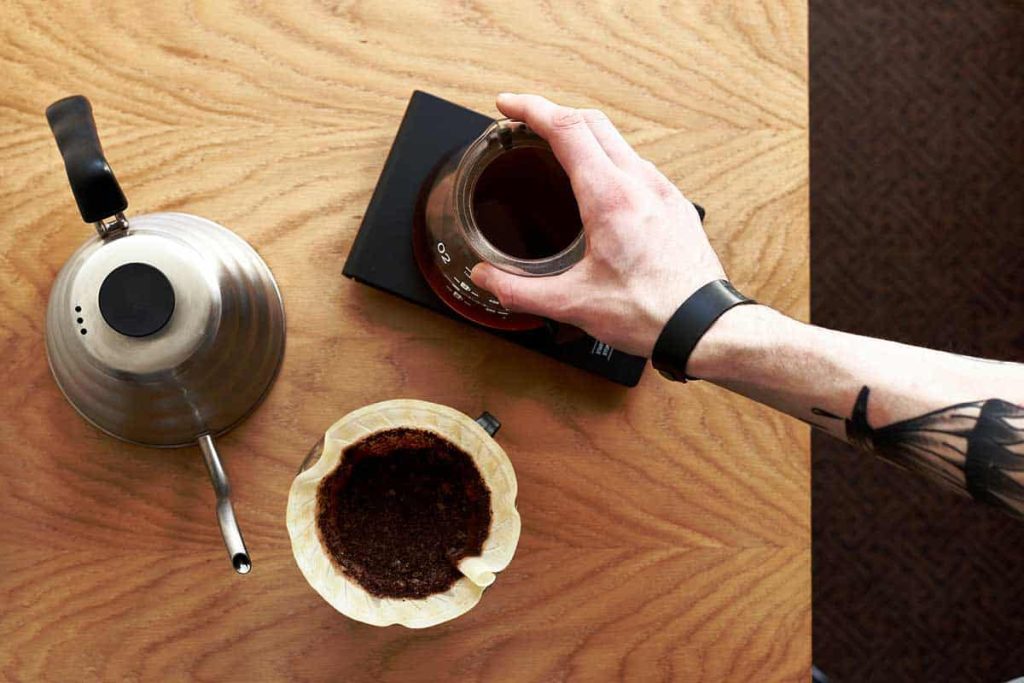
When it comes to the pour over, the device is made from a cup, a filter, and a funnel. You do not need anything more than these three things to prepare the coffee. Compared to the French press, the pour over seems a bit simpler to use.
While on the topic of French presses, I would like to note that this device is made from several parts that you cannot go without. You need a carafe with a metal frame and a handle, a lid and a rod to close the carafe, and the plunger, a key part of the device. Depending on the type of press you have, it might come with additional filters and plates that will help make your coffee taste better.
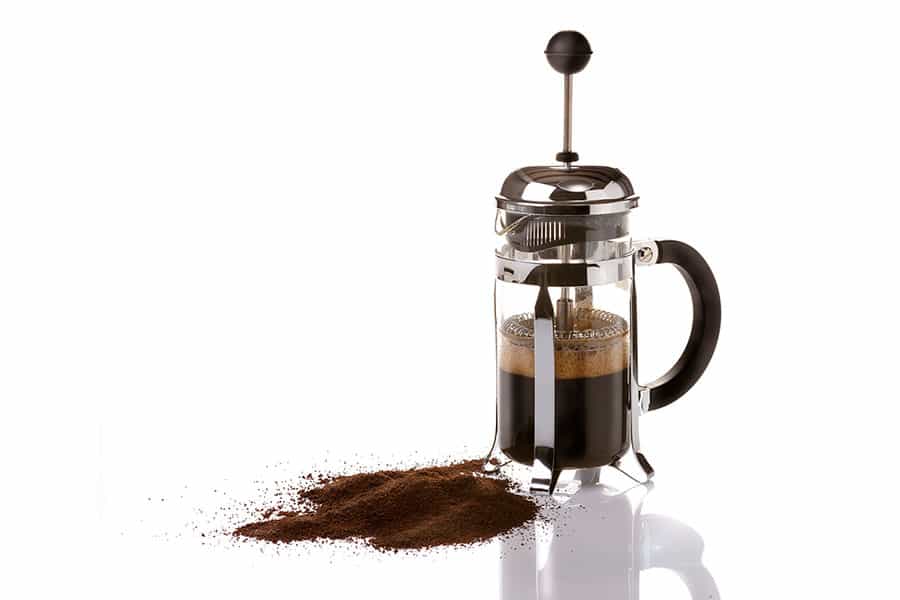
In terms of manufacturers that make these devices, there are a ton of them that you can choose from. Both the French press and pour over can be found in various sizes and shapes with additional features and parts, but nearly all of them come at affordable prices. To learn more about the features of these amazing coffee makers, go right to the next section!
French Press vs Pour Over: Features Comparison
I have covered what constituent parts both the French press and the pour over are made of. Now, I would like to get more into the features of these coffee makers and tell you everything you need to know about them. Let’s get right into it:
Type of Coffee Beans
If you are wondering what type of beans can be used with these two devices, I am here to tell you that you have to be careful with the selection. The French press and pour over do not work well with just any type of beans. If you use the wrong type of beans, your coffee will end up tasting far worse than you would ever expect.
Even though the type of beans you want to use mainly depends on your personal preferences, there are a few things I would like to point out. If you are planning on using a pour over to make coffee, it would be best if you start with light roast beans that are a medium-fine grind. I have consulted with many coffeeholics, and they pointed out this type of bean as the best for pour over coffee.
From pour over to French press – it is time to move on from light roast to the medium and dark roasts. When brewing coffee with a French press, it would be best if you use medium to dark roast coffee beans that have coarse grind. In this case, finely ground beans can escape the plunger and make their way into your cup.
Even though I would advise you to consider my recommendations, I would also like to say that you should make the coffee brewing process more interesting and try different things out before you choose your favorite flavor. There are so many different coffee blends to go over that you should never let coffee brewing become dull!
Mode of Extraction
One of the biggest differences between the French press and pour over is the method of extraction. As noted before, the French press is based on full immersion, whereas the pour over is based on infusion. Let me tell you what this means!
When it comes to full immersion, you are required to dip the coffee grounds in water and let them sit like that for a while. The interaction between the two makes the coffee. To drink the coffee, the only thing you need to do is remove the grounds and pour what was the water but is now the coffee into a cup!
On the other hand, you have infusion as a method of extraction. This method requires you to run the water through the coffee grounds, extracting the flavors as you do so. When you prepare coffee using the pour over, you will inevitably see that it is very similar to preparing tea.
Brewing Process
I know that explaining the immersion and infusion method might have left you a bit more confused than before. Even though these methods have complicated names, they are actually very simple in practice. To show you just how simple they are, I want to tell you what the brewing process involves for both the French press and the pour over.
Pour Over
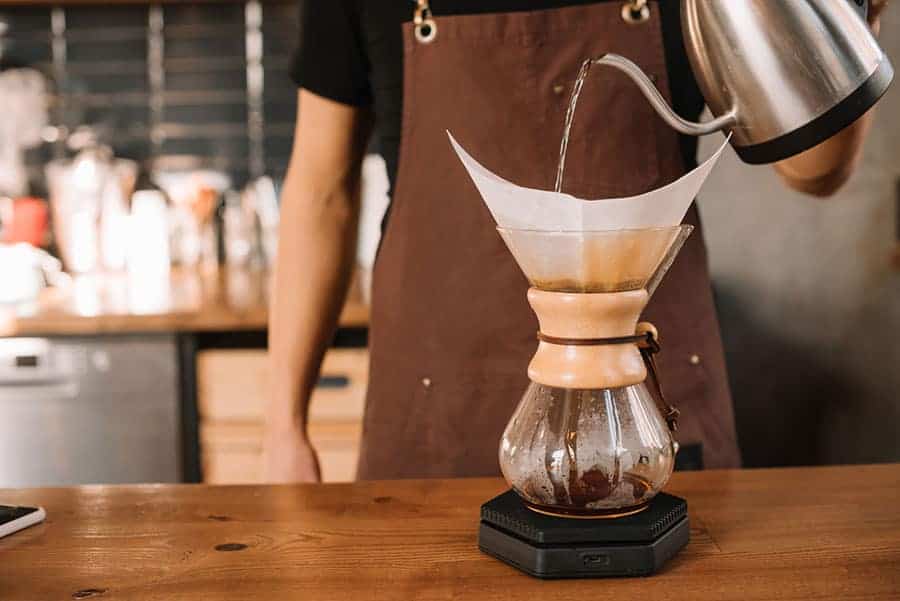
Let’s start with the pour over because it is a bit simpler.
The first thing you need is the coffee beans. Depending on how much coffee you are looking to prepare, you can choose the amount of coffee beans you need. For one gram of coffee, you should use about 16 milliliters of water to get the best taste.
Take the cup and place it on a flat surface. Then, add the damp filter and place the freshly ground beans in the filter. From above, start pouring some hot water (preferably around 200 degrees Fahrenheit), but make sure you pour slowly. As the water hits the grounds, it will start going through them, and from the other side of the filter, coffee will start to come out.
You should degas your coffee for about 30 seconds so that all the CO2 is removed from it. If you use high-quality beans and a good filter, your coffee should taste great!
French Press
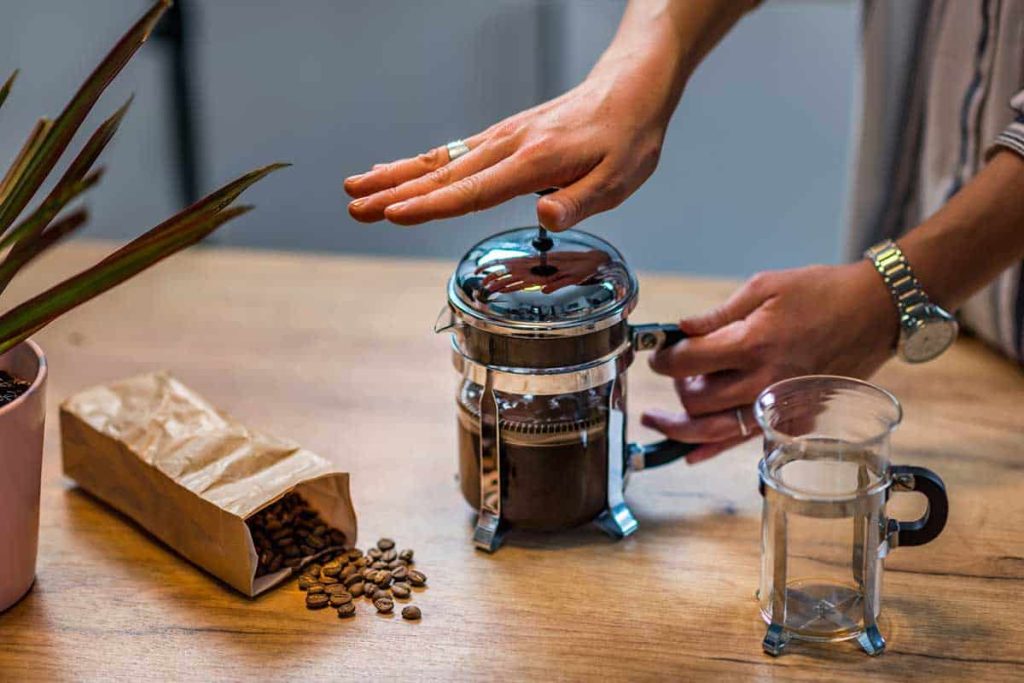
Moving on to the French press.
When it comes to brewing coffee with a French press, the first thing you need to do is get your carafe and place it on a flat surface. Put some of the coffee beans in – for about 10 grams of coffee, you should use 250 milliliters of hot water. You can also choose to use water at room temperature if you want a cold brew.
Once you have the grounds in the carafe, heat the water, pour it into the carafe, and stir it up. Add the plunger and close the carafe. Let the grounds and water mix for a few minutes before pressing the plunger.
When you press the plunger, make sure you do so slowly and with controlled pressure. The plunger should remove the grounds from the coffee, allowing you to enjoy your coffee fully. The taste of your coffee should be a bit fuller than the pour over coffee.
Extraction Time
In terms of extraction time, both the French press and the pour over need anywhere from 3 to 4 minutes to prepare a cup of coffee. However, when using the pour over, you need to leave the coffee to sit for several more minutes before you drink it. If you drink it right away, it might taste a bit bland.
With that being said, the French press is better if you are looking for a coffee maker that makes coffee faster without compromising the taste.
Convenience
As for convenience, both the French press and the pour over are very convenient. They do take some getting used to and you might get a few cups of bland coffee before perfecting your brewing technique, but once you do, you will find that both coffee makers prepare really good coffee.
The pour over might be slightly more convenient than the French press – when using the latter, you have to be really careful with the plunger. If you are not, you might get a few escaped grounds in your cup of coffee which can be somewhat unpleasant.
Cleaning and Maintenance
The pour over is easier to clean than the French press just because it is made from one or two parts only. If you have a high-quality durable filter, you can easily clean it from the old grounds and reuse it whenever you need it.
On the other hand, thoroughly cleaning a French press might take you a while. That is because the French press has more parts that you have to scrub and rinse before putting them together again. The cleaning process is not difficult at all, but it certainly is a bit time-consuming.
Price
Any quality coffee maker can come at a price. I recommend that you go to a specialty store and purchase a French press or pour over from a brand you know and trust. If you try to save money by buying devices from an unknown seller, you might end up with something that is questionably made.
French Press vs Pour Over: The Winner
You have finally reached the end of this article which means that you know everything about French presses and pour overs. You should have a clear idea about which coffee maker is better for you, but let me sum it up again.
French presses are better for people looking to brew coffee quickly and efficiently while having enough flexibility to choose the type of beans they want to use. On the other hand, pour overs are better for people looking for a simple and elegant brew that they will be able to control. In the end, both these options are great, and I think you will not make a mistake with either one!
Let me know in the comments below if you like using a French press or a pour over more. I cannot wait to read all about your coffee brewing experiences!
Owen is a writer and editor at Caffe Streets who considers himself a coffee fanatic. He spends his time researching and testing different coffee beans and brewing methods and sharing what he learns with others.





